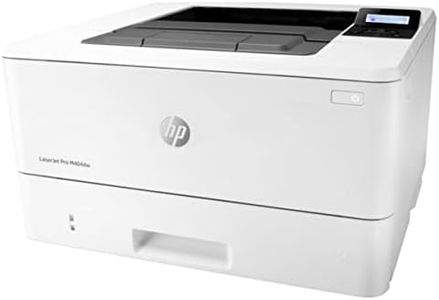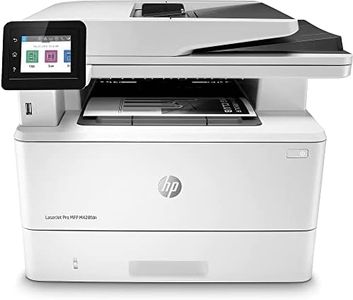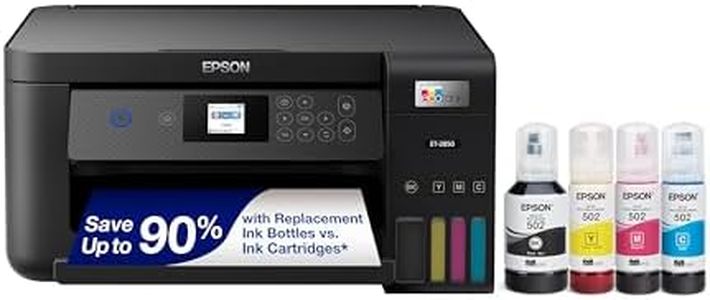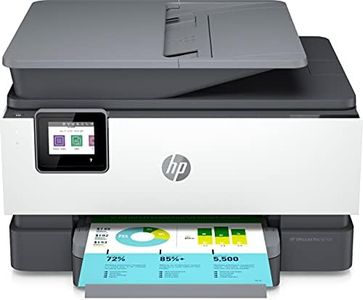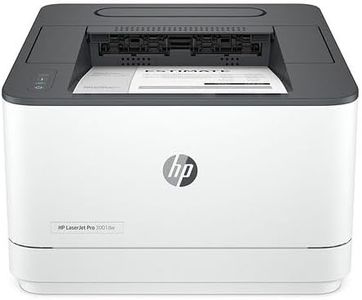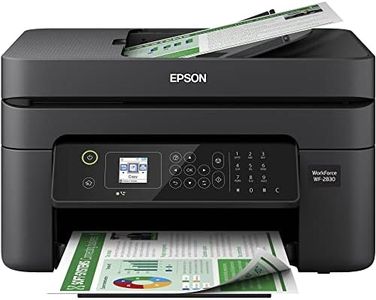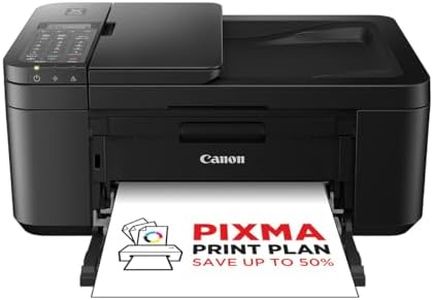We Use CookiesWe use cookies to enhance the security, performance,
functionality and for analytical and promotional activities. By continuing to browse this site you
are agreeing to our privacy policy
10 Best Two Sided Printers
From leading brands and best sellers available on the web.By clicking on a link to a third party's website, log data is shared with that third party.
Buying Guide for the Best Two Sided Printers
When choosing a two-sided printer (also known as a duplex printer), it's important to think about how you'll use it in your daily life or at work. Two-sided printing helps save paper and makes your documents look more professional. Your main goal is to find a printer that matches your printing volume, speed needs, connection preferences, and the kinds of documents you'll be printing. Taking a bit of time to understand the key specifications can help you avoid frustrations later and make printing smooth and cost-effective.Duplex Printing TypeDuplex printing means the printer can print on both sides of the paper automatically or you have to flip it yourself. There are two main types: automatic duplex and manual duplex. Automatic duplex printers handle two-sided printing by themselves which is convenient and saves time, especially if you print a lot. Manual duplex printers require you to reinsert the paper to print on the other side, which can be slower and more error-prone. If you expect to print a lot of two-sided documents, go for automatic duplex. If you'll only use it occasionally, manual duplex could be enough.
Print SpeedPrint speed tells you how many pages per minute (ppm) the printer can produce. This is more important if you print often or in large batches. Lower speeds (under 20 ppm) are fine for light personal use, while moderate speeds (20-30 ppm) are suitable for home offices or small teams. High speeds (above 30 ppm) are best for busy offices or frequent printing. Think about how much you print: if it's just the occasional document, low speed is fine. If time matters and you print a lot, aim higher.
Print Technology (Laser vs Inkjet)The two main printer types are laser and inkjet. Laser printers are faster and better for black-and-white documents, making them great for office use or lots of text. Inkjet printers do well with color printing and photos, and are often a better choice for creative work or households that need to print images. Decide how much you care about color quality versus speed and text clarity, and pick the technology that matches your needs.
Connectivity OptionsConnectivity refers to how the printer communicates with your devices. The common choices are USB, Wi-Fi, Ethernet, and sometimes Bluetooth. If you plan to print wirelessly from phones, tablets, or multiple computers, choose a printer with Wi-Fi. Ethernet is useful for office networks, while USB is best for a direct connection to a single computer. Match the printer's connectivity options to the devices and network setup in your home or office for easier printing.
Paper HandlingPaper handling refers to the types and quantities of paper the printer can store and print on. Key points are the size of the input tray (number of sheets it can hold), and whether the printer can handle paper sizes and types you need, like envelopes or glossy photo paper. For busy environments, a larger tray means less frequent refilling. If you print on unusual media, check that the printer supports it. Think about your usual print jobs and pick based on the paper types and volumes you'll be using.
Duty CycleDuty cycle is the maximum number of pages the printer is designed to handle in a month. This spec helps you understand how robust the machine is. For occasional home use, a lower duty cycle is usually fine. Small businesses or busy households should look for a moderate number, while high-traffic offices should select a printer with a high duty cycle to avoid overload and breakdowns. Estimate your average monthly prints to match a printer's duty cycle to your needs.
